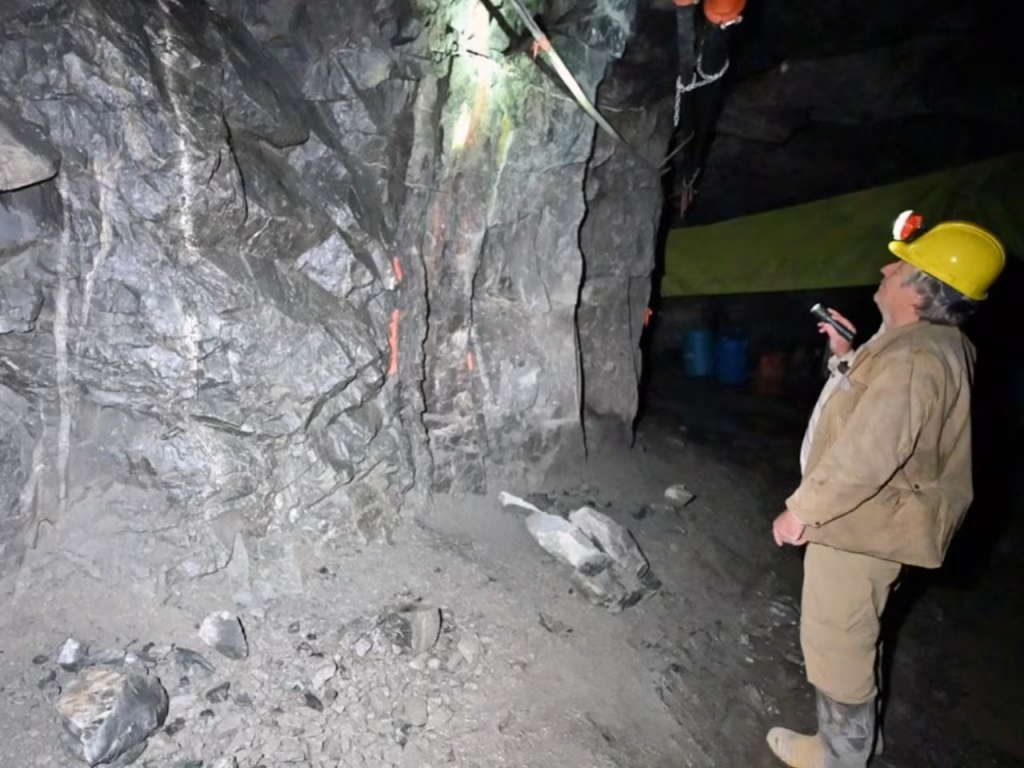High gold prices have mining companies optimistic about N.W.T. projects

Demand for the precious metal has been steadily climbing since 2023
Some mining and exploration companies in the N.W.T. are feeling optimistic as gold prices remain high after a surge earlier this fall — and one company is hoping to ramp up production in the near future.
In October, the price of gold hit a record high of over $4,300 US per troy ounce. For context, gold reached a previous high of $2,029 US per troy ounce in December 2023, and the price has been steadily climbing since then.
Dave Webb, CEO of B.C.-based Sixty North Gold, says that’s great news for the industry he’s been interested in since the 1970s.
The company is looking at entering production at the Mon Mine, located about 45 kilometres north of Yellowknife, in 2026. Webb says gold prices have helped his company raise investor dollars for the purchase of a mill for the mine site. He expects it to arrive in March via the winter road.
“It comes down to, we’ve always had the story, now we’ve got the money,” says Webb.
Webb expects that if all goes well with the arrival and assembly of the mill, the Mon Mine could see its first gold pours by July.
Sixty North Gold is not the only mining company in the N.W.T. adapting its plans for a changed market. Fortune Minerals, based in London., Ont., is preparing new mineral reserve estimates, a mine plan and production schedule for its NICO Project, about 160 kilometres northwest of Yellowknife.

And last week, junior exploration company Gold Terra announced that it had raised $6.3 million to go toward its proposed 2026 drilling program at the Con Mine property near Yellowknife. The company has also said that the high gold prices mean it could expand that drilling program.
In keeping with the changes, at the end of this month the City of Yellowknife is inviting residents to participate in two workshops “exploring the future of gold mining in the Yellowknife area.”
Gold as a ‘safe haven’
The surging demand for gold is largely being attributed to global economic uncertainty and investors looking for a safe pace to park their money.
“I’ve noticed in the past whenever you start to have disruptions, people tend to gravitate towards gold as a bit of a safe haven for investment purposes,” said Karen Costello, executive director with the Northwest Territories and Nunavut Chamber of Mines.
Costello says the benefits of a mine opening could be widespread for the N.W.T., and greater than in the past thanks to shifting practices and more thorough consultations.
“A gold mine operator of 2025 and beyond will have to do things differently than the past,” said Costello.
“The expectations for companies through their requirement for Indigenous benefit agreements, their requirements for socioeconomic agreements with the territorial government, the amount of regulatory oversight from various levels of government — whether it be Indigenous or territorial or federal — is very different. There’s an enhanced awareness.”
Mon Mine outlook
For Sixty North Gold, Webb says about 60 per cent of the gold produced at Mon Mine would be through free milling, which involves simple crushing to separate the gold. That means it would not require roasting the mineral grain during production, which releases arsenic.
Webb says the mine would also use a flotation circuit.
“It’s a century-old techn
“And some are hydrophobic. That means it doesn’t like getting wet, so it won’t attach to bubbles and it’ll sink.”
Webb says then the residual gold would be pulled from the slurry, leaving nothing but sand in the tailings, with all the sulfides and any harmful metals to go in the well.
Permitting was secured for the Mon Mine in 2014, and Webb says the company successfully reapplied in 2020 and is now working to secure a new permit for an additional seven years.
ology where we found out that some mineral particles, if you blow air bubbles through it and add a little bit of a weak soap to make bubbles, some minerals will attach to the bubble and float up,” he said.
Comments, tips or story ideas? Contact Eilís at eilis.quinn(at)cbc.ca
Related stories from around the North:
Canada: PM, Manitoba reaffirm Arctic Gateway push, though project absent from recent federal priority list, CBC News
Greenland: Greenland’s leader hails EU as trusted friend and urges investment in its minerals, The Associated Press
Norway: Lawmakers in Norway make a deal opening up for deep sea mining in Arctic Ocean, The Associated Press
Russia: Putin in Arkhangelsk: Arctic industry and infrastructure on agenda, The Independent Barents Observer
Sweden: Just how significant is the discovery of rare earth metals in Arctic Sweden?
United States: Alaska Ambler Road project back in focus as company outlines vision for work ahead, Reuters



